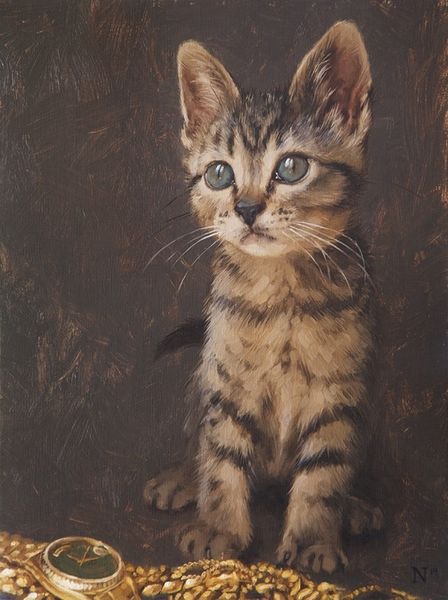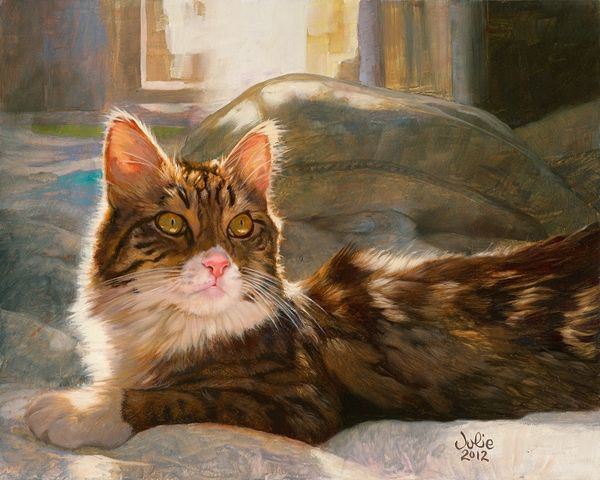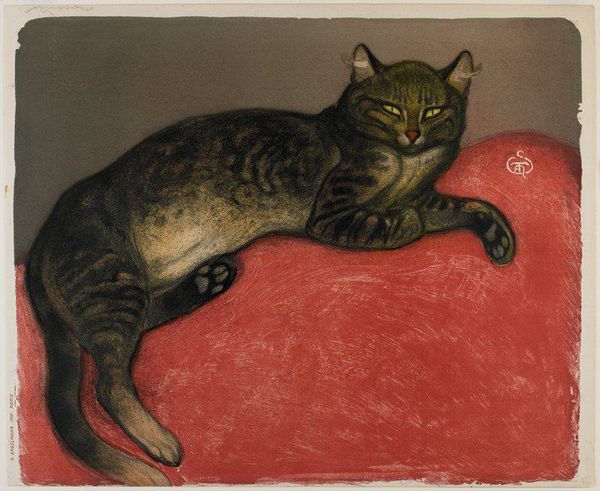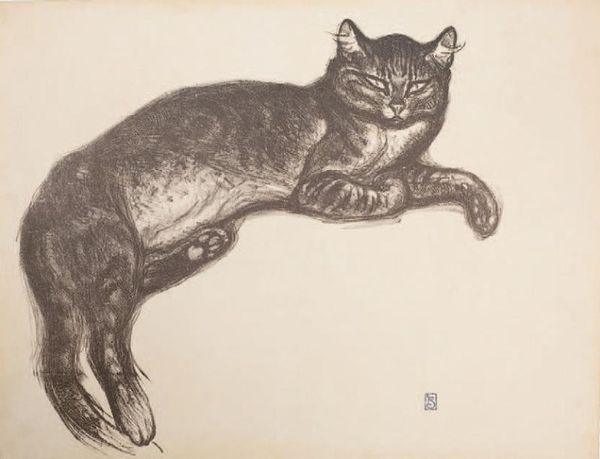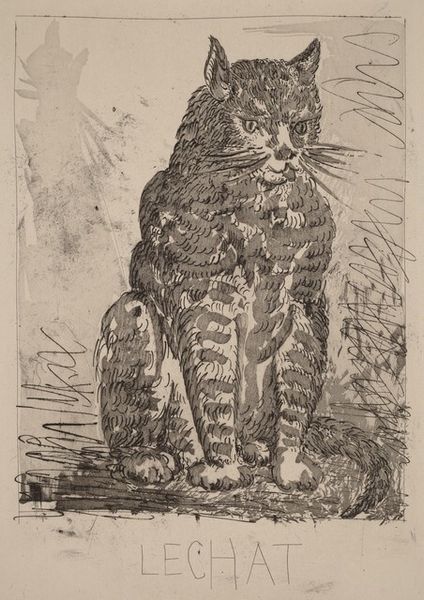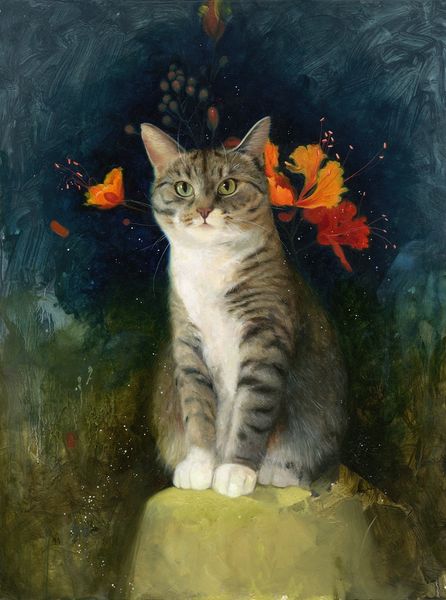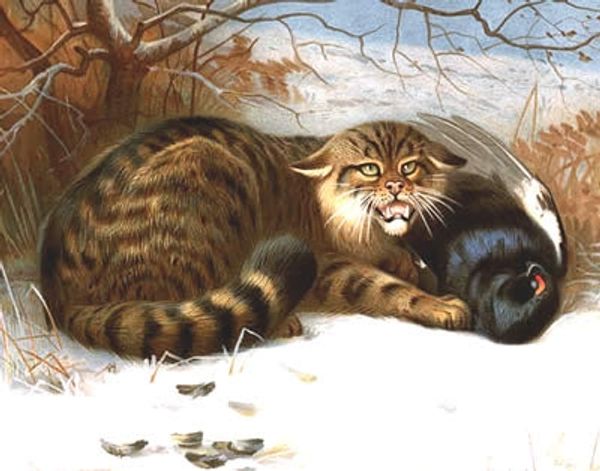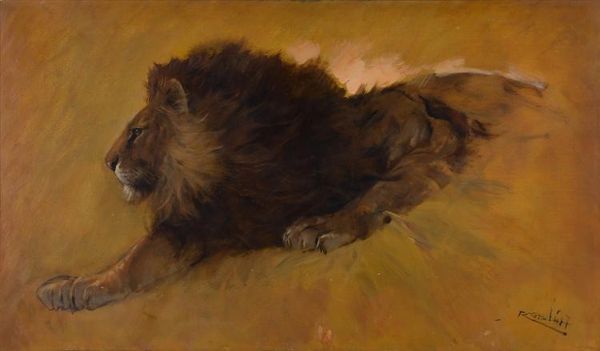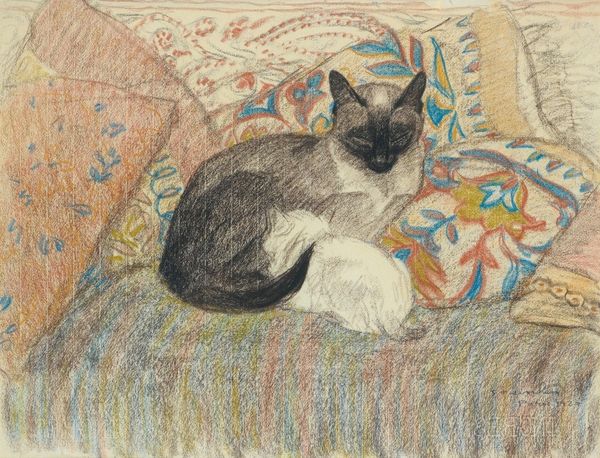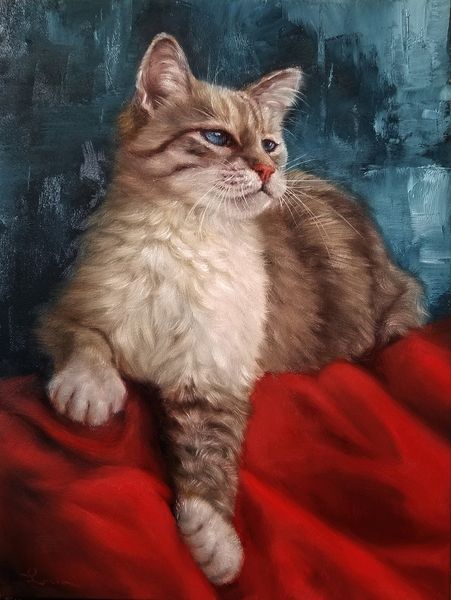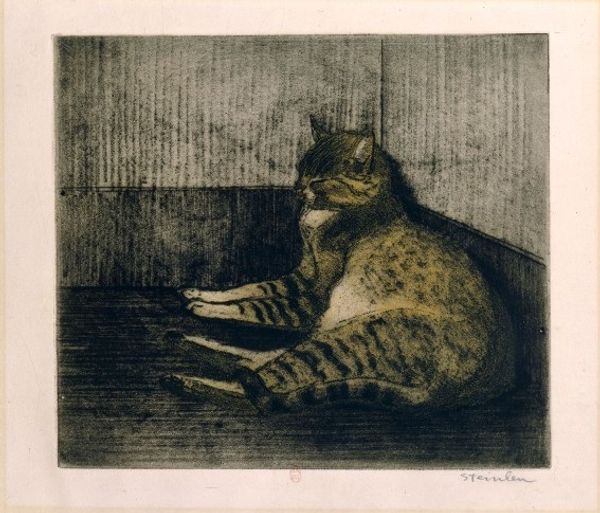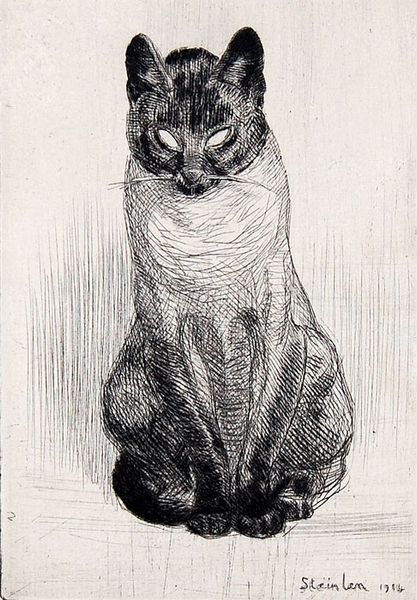
Copyright: Public domain
Editor: This is Théophile Alexandre Steinlen’s oil on canvas from 1909, titled "The Summer - Cat On A Balustrade". The first thing that strikes me is the cat’s piercing stare. What compositional choices do you think contribute most to its impact? Curator: Formally, the most striking element is the cat’s gaze, emphasized by its direct alignment with the viewer. The diagonal composition, bisected by the balustrade, guides our eye from the lower corner up to the animal's face, a calculated technique that isolates its presence and psychological weight. Editor: Interesting. I was focused on the figure-ground relationship - how the cat seems to blend with the foliage in the background through a shared palette. Is this a device to diminish or amplify the presence of the figure? Curator: Consider that Steinlen utilizes color and tone to create both harmony and contrast. Note how the varied dark striations in the cat’s coat establish tonal alignment with the background’s leaves, integrating the animal within its surrounding environment, yet, also recognize that the texture is distinctly different between the cat's fur and the suggestion of foliage to set them apart. This distinction is also heightened by the cat's posture against the straight, angular balustrade to provide contrast, as the animal's curvilinear form serves to make it stand out. Editor: That makes sense. I was getting lost in the details without considering how the forms work together. Thanks for pointing that out. I will spend more time thinking about how to discern relationships such as color, form and balance. Curator: Precisely. Approaching the formal elements of an artwork offers a structured avenue for interpretation and a deeper appreciation for the artist’s choices.
Comments
No comments
Be the first to comment and join the conversation on the ultimate creative platform.
